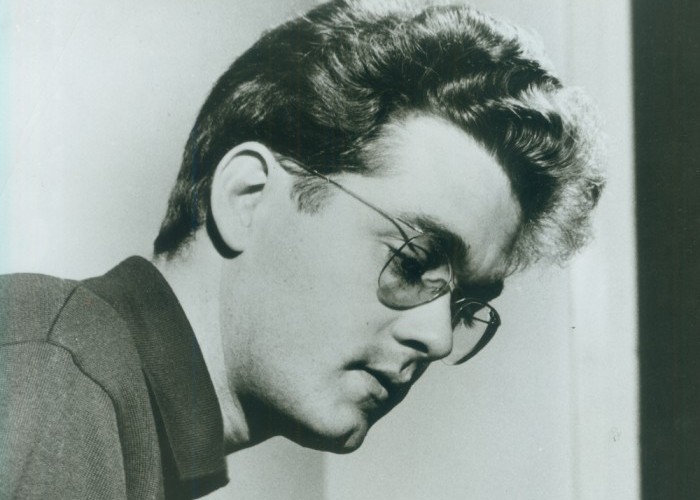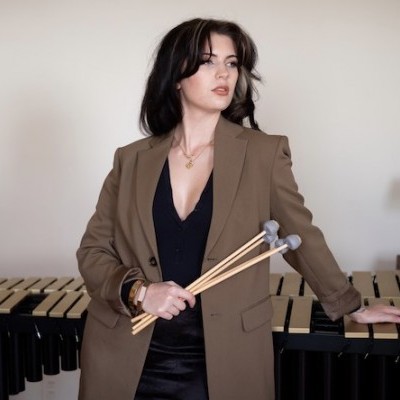Jun 3, 2025 11:25 AM
In Memoriam: Al Foster, 1943–2025
Al Foster, a drummer regarded for his fluency across the bebop, post-bop and funk/fusion lineages of jazz, died May 28…

Michel Legrand (1932-2019)
(Photo: DownBeat Archives/Columbia Records)In the years following World War II, when forward-looking intellectuals in France and the United States were infatuated with each other, French pianist, composer and arranger Michel Legrand was the ideal bridge between the two worlds. Still performing until his death at age 86 on Jan. 26, Legrand contributed to a number of jazz recordings, most notably Legrand Jazz, a 1958 session that included Miles Davis and John Coltrane.
Born in a suburb of Paris, Legrand studied for seven years at the Conservatoire de Paris, where his teachers included the renowned Nadia Boulanger, who also would tutor Quincy Jones, Aaron Copland and Astor Piazzola. By the time he left the conservatory in 1949, Legrand had added jazz to his interests, having been enthralled by a 1947 Dizzy Gillespie concert. He would go on to record with Gillespie on Dizzy Digs Paris in 1953.
In the early ’50s, Legrand became an in-demand accompanist and arranger for popular French performers like Édith Piaf and Juliette Gréco, but what allowed him to break out was a collection of French chansons arranged by Legrand for English-language performances. Released in 1954 by Columbia-EMI, I Love Paris sold 8 million copies worldwide and secured the pianist a job as Maurice Chevalier’s musical director on several U.S. tours.
Legrand became ubiquitous during the next four years, releasing numerous “easy listening” recordings with titles like Holiday In Rome, Legrand In Rio and Michel Legrand Plays Cole Porter. The albums led Columbia Records in the U.S. to offer him a recording session in New York City.
Speaking to DownBeat in 2016, Legrand recalled: “Columbia says to me, ‘We would like to give you a present. Tell us [the kind of] album you want to make, and we’ll pay for it, and you’ll do it.’ So I said, ‘I want to do a jazz album—with Miles Davis, John Coltrane, and I named all the jazz musicians on the album. And they said, ‘Let’s do it.’”
Aside from Davis and Coltrane, Legrand Jazz included Ben Webster, Bill Evans, Phil Woods, Hank Jones, Art Farmer and Donald Byrd, among others. An oddity in Davis’ massive catalog, the session cemented a lasting friendship between the two, which would eventually culminate in a second recording, the soundtrack to the film Dingo, which was recorded in 1990 and released the following year.
In his 2016 interview, Legrand said that Davis summoned him to Los Angeles for the Dingo sessions, but then balked at getting underway. Eventually, Legrand pulled the score together and Davis went into the studio with 30 musicians, including then-current members of the trumpeter’s ensemble: Ricky Wellman, Benny Rietveld, John Bingham and Kenny Garrett.
“I remember being excited about recording with Miles and Michel—two legends,” Garrett wrote in an email to DownBeat. “Michel composed so many great songs.”
The film, directed by Rolf De Heer and starring Davis as trumpeter Billy Cross, was a box office disaster, grossing just $132,500 in De Heer’s native Australia. In that regard, it was just one of a number of films that are better known for Legrand’s contributions than for their cinematic success.
Legrand’s connection to the film world stretches back to the mid-’50s when the composer began working with French directors like Jean-Luc Godard, Henri Verneuil and Jacques Demy. The latter’s 1964 film, The Umbrellas of Cherbourg (Les Parapluies de Cherbourg), an innovative pop-opera, yielded two songs—“I Will Wait For You” and “Watch What Happens”—that have become classics.
Among Legrand’s other well-known songs for films are: “The Windmills Of Your Mind” from The Thomas Crown Affair (1968), which won an Academy Award for best song; “The Summer Knows,” the theme from Summer of ’42 (1971), for which he won an Oscar for the movie’s score; and the Oscar-nominated “What Are You Doing the Rest of Your Life?” from The Happy Ending (1969).
Legrand (along with lyricists Alan Bergman and Marilyn Bergman) won an Oscar for the score to Barbra Streisand’s 1983 film, Yentl. Legrand’s final work for film was for a long-lost feature by Orson Welles (1915–’85), which was titled The Other Side Of The Wind and finally released in 2018.
During the second half of his life, whatever major project was occupying him, Legrand never turned away from jazz. He made three albums with a regular trio featuring bassist Marc-Michel Le Bévillon and drummer André Ceccarelli, and recruited saxophonists Woods and Zoot Sims to join him in a septet to make the 1982 album After The Rain.
He also became a celebrated guest artist, a role that enabled him to pursue his often-expressed wish to work in as many musical fields as possible. To that end, he performed with a wide range of artists, including Ray Charles, Diana Ross, Kiri Te Kanawa, Sarah Vaughan and Björk.
Overall, Legrand recorded more than 100 albums, for which he won five Grammys. DB

Foster was truly a drummer to the stars, including Miles Davis, Sonny Rollins and Joe Henderson.
Jun 3, 2025 11:25 AM
Al Foster, a drummer regarded for his fluency across the bebop, post-bop and funk/fusion lineages of jazz, died May 28…

“Branford’s playing has steadily improved,” says younger brother Wynton Marsalis. “He’s just gotten more and more serious.”
May 20, 2025 11:58 AM
Branford Marsalis was on the road again. Coffee cup in hand, the saxophonist — sporting a gray hoodie and a look of…

“What did I want more of when I was this age?” Sasha Berliner asks when she’s in her teaching mode.
May 13, 2025 12:39 PM
Part of the jazz vibraphone conversation since her late teens, Sasha Berliner has long come across as a fully formed…

Roscoe Mitchell will receive a Lifetime Achievement award at this year’s Vision Festival.
May 27, 2025 6:21 PM
Arts for Art has announced the full lineup for the 2025 Vision Festival, which will run June 2–7 at Roulette…

Benny Benack III and his quartet took the Midwest Jazz Collective’s route for a test run this spring.
Jun 3, 2025 10:31 AM
The time and labor required to tour is, for many musicians, daunting at best and prohibitive at worst. It’s hardly…